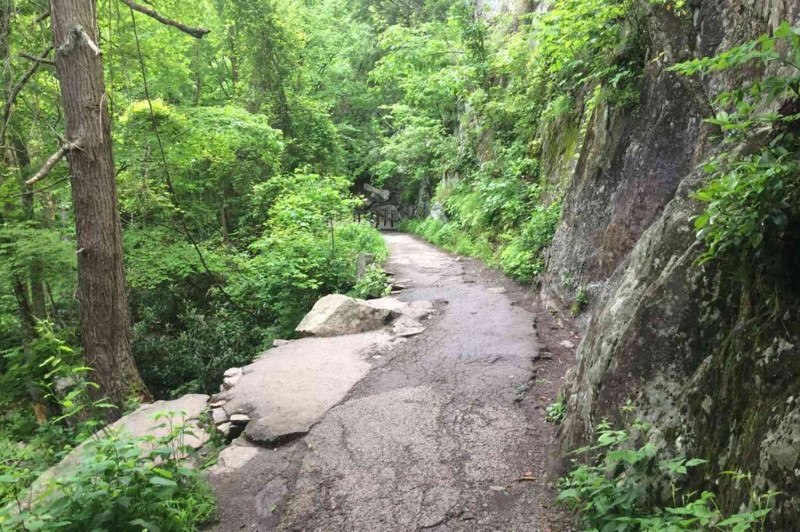The National Park Service will close one of the most popular trails in Great Smoky Mountains National Park next month as part of a more than year-long improvement effort.
Starting Jan. 6, 2025, the Laurel Falls Trail will close for 18 months to construct new viewing platforms for the falls, repave and widen the asphalt trail (which was first paved in 1963), reduce hazards with the slippery and steep area around the falls, and install new signs and educational panels, according to the National Park Service. The project will also improve the trailhead parking area and add about 50 parking spaces.
“Laurel Falls Trail is a beloved feature of Great Smoky Mountains National Park,” acting park Superintendent Boone Vandzura said in a statement. “The rehabilitation will provide for greater safety and an enhanced visitor experience; we look forward to enjoying the trail together once work is complete.”

Courtesy of NPS
During the construction, access to Laurel Falls will be closed from both the Little River Road and the junction of Little Greenbrier Trail and Cove Mountain Trail, the NPS noted. The Sugarland Mountain Trail and that parking lot will also be closed.
The Laurel Falls Trail is a 2.6-mile roundtrip hike through a mixed hardwood forest. The popular trail leads to an impressive 80-foot waterfall.
However, that isn’t the tallest waterfall in the park. That honor belongs to the 105-foot-tall Ramsey Cascades waterfall, and lucky for park visitors, the NPS just finished a three-year-long restoration of the 8-mile-long roundtrip trail that leads there.
Another alternative is the smaller, 40-foot-tall Cataract Falls, which is accessed by a short 0.7-mile-long roundtrip hike; and the 4.3-mile-long roundtrip hike to the 90-foot-tall Hen Wallow Falls.
Great Smoky Mountains National Park sits between both North Carolina and Tennessee, and was the most-visited national park in the country in 2023. The park features more than 500,000 acres, 10 developed campgrounds, and more than 100 backcountry campsites.